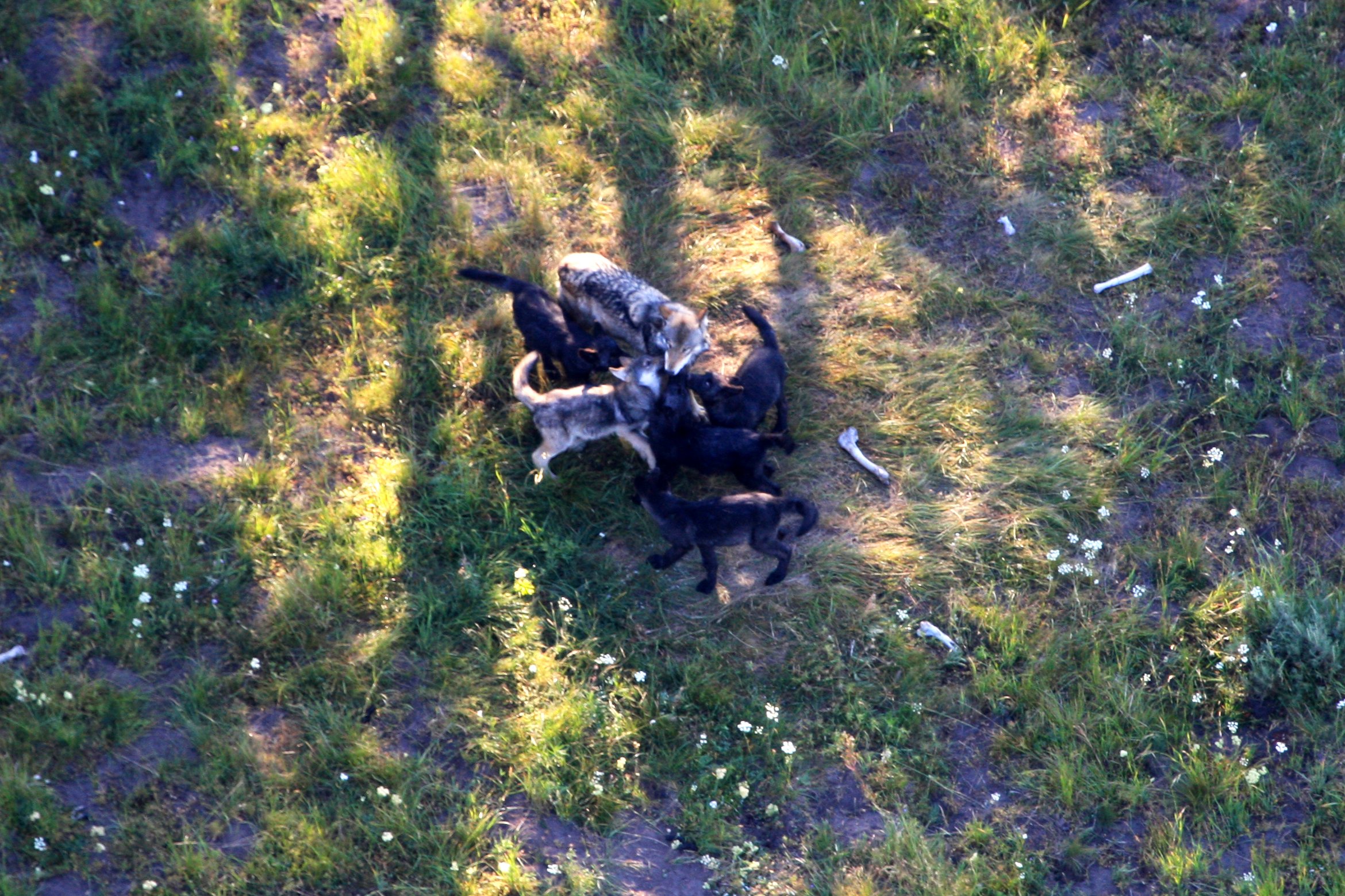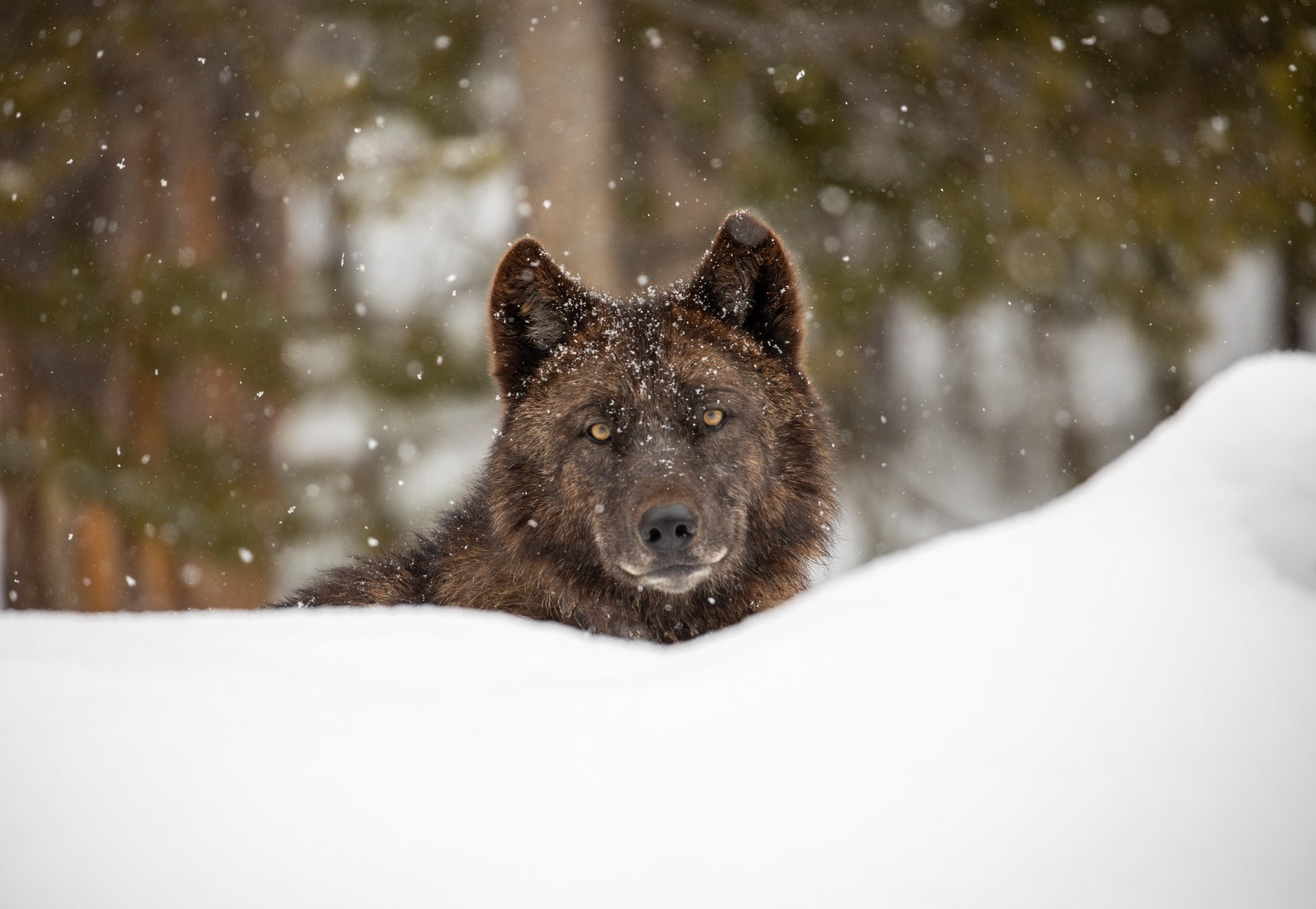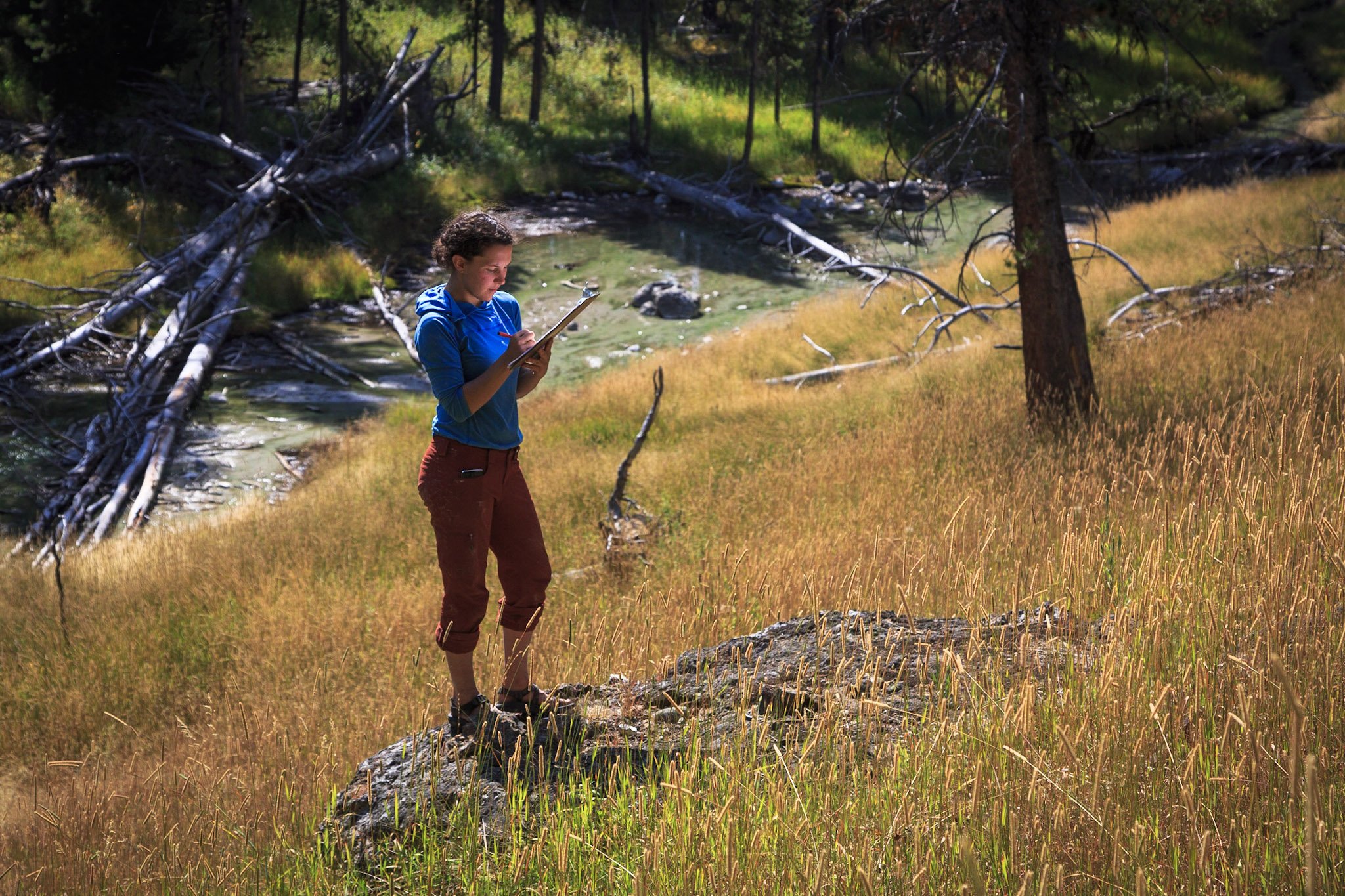Studying Yellowstone's iconic wolves
Yellowstone’s wolf packs are iconic. Their reintroduction into the world’s first national park in 1995 is considered one of America’s best conservation success stories. Yellowstone National Park continues to be one of the best places in the world for studying wild wolves. I had the wonderful opportunity to learn about wolves and their behavior with our friend, Yellowstone Wolf Project Research Associate Kira Cassidy.
An aerial view of the Mollie’s pack in Yellowstone National Park.
It’s October, but snow lingers on the sage from an early autumn storm. The static from Kira’s radio buzzes as we intently listen for the “tick, tick, tick,” indicating a wolf with a radio collar is nearby. However, we’re not with Kira to necessarily find wolves. I’m here to learn about the wild wolves of Yellowstone from an expert to help understand the vital role they play as a keystone predator in the Greater Yellowstone Ecosystem. We continue to drive through Lamar Valley, as I pepper Kira with questions and feeding off her infectious enthusiasm for studying wolves.
For Kira, Yellowstone captured her heart on a family trip she planned from the Midwest with the sole goal of seeing a wolf or bear. They succeeded, and staring into the eyes of the enormous, alpha male of the Druid pack (wolf 480M), Kira was captivated. Years later and with a degree in Natural Resources, Kira made her way back to Yellowstone and secured a position as a research associate with Doug Smith, who was instrumental in the wolf reintroduction effort 25 years ago this week.
Yellowstone wolf biologist Kira Cassidy writing data while out in the field. (Photo Josh Metten)
During our visit with Kira, I learned that 2019 has been one of the best years for pup survival, with 49 pups documented in Yellowstone as of my visit. The Junction Butte pack, whose territory includes Slough Creek and part of the Lamar Valley, had 10 pups while the new Phantom Lake pack has a whopping 13 pups! Data over the years also shows that the park wolf population hovers around 90-110 wolves and the park’s current population of 106 is stable. The Phantom Lake pack formed in 2019 when a few females from the 8 Mile pack met a male from the Wapiti Lake pack. Kira knows many of these packs intimately, recognizing individuals by their gait or the patterns in their fur. While we didn’t see any wolves while out in the park, I felt like I got to know many of them personally through Kira’s comprehensive summaries.
A wolf traveling through a snowy Yellowstone National Park. (Photo NPS/ Jacob W. Frank)
When asked which pack is her favorite, Kira responded with the Mollie’s pack, who live in the high-plateau, snowy interior of Yellowstone. She describes the Mollie’s as the epitome of a “girl-power” group. Over their nearly 25-year reign in Yellowstone, the pack has had only had six alpha females, allowing each leader to gain a wealth of experience to pass along to the next generations. The longest alpha female reign in the Mollie’s pack was six and a half years, double the average lifespan of a wolf in Yellowstone National Park. This allows for a stable life in a tough territory where at times bison are the primary prey option after elk have migrated away to lower elevation winter ranges. For a wolf pack, taking down a 2,000+ pound bison with thunderous kicks and deadly horns can pose a life-threatening challenge. Only with an experienced, united front can pack members take down this tank-like prey.





One of Kira’s favorite things about studying wolves is learning each unique personality. A trio of yearlings from the Junction Butte pack was an especially fun group to watch this year. One grey male was serious, responsible, and diligently brought food to the pack’s new pups trip after trip. The other two were goofballs, a black male and a black female. They were uninterested in being mature and preferred to roam and explore their pack’s territory. The duo was curious and bold, exploring places and things other more cautious wolves would avoid. They spent much of the spring months traveling the pack’s territory, sometimes along the road corridor, occasionally bringing food to the pups but never lingering at the den with the other adults. Once, Kira even saw the female play-bowing and prancing around with two grizzly bear yearlings. The Yellowstone Cougar Project team, who work closely with the Wolf Project, even had a trail cam video of the young threesome displaying each personality perfectly and can be viewed below.
Meeting with Kira out in the field helps us stay up-to-date on wolf issues and dialogue about wolf conservation throughout the Greater Yellowstone Ecosystem. As large predators, wolves play a key role in ecological processes that maintain a healthy, thriving natural system. Restoring wolves to Yellowstone has provided a unique scientific opportunity to study this species and how they influence ecosystems. The wolves of the park are of deep importance to many people who travel from across the globe to watch these amazing animals in the wild. Wildlife tourism is an important economic driver for the communities around Yellowstone with a study from the University of Montana in 2005 finding that the presence of wolves brings in $35 million to communities in the Greater Yellowstone Ecosystem each year.
Kira in her office in Mammoth Hot Springs, surrounded by binders filled with decades of Yellowstone wolf data. (Photo GYC/Emmy Reed.)
A huge thank you to Kira for letting me tag along to experience a day in the life of a Yellowstone wolf biologist. If you’re interested to hear more from Kira, you can check out her TEDxBozeman Talk.
-Emmy Reed, Communications and Digital Media Associate




